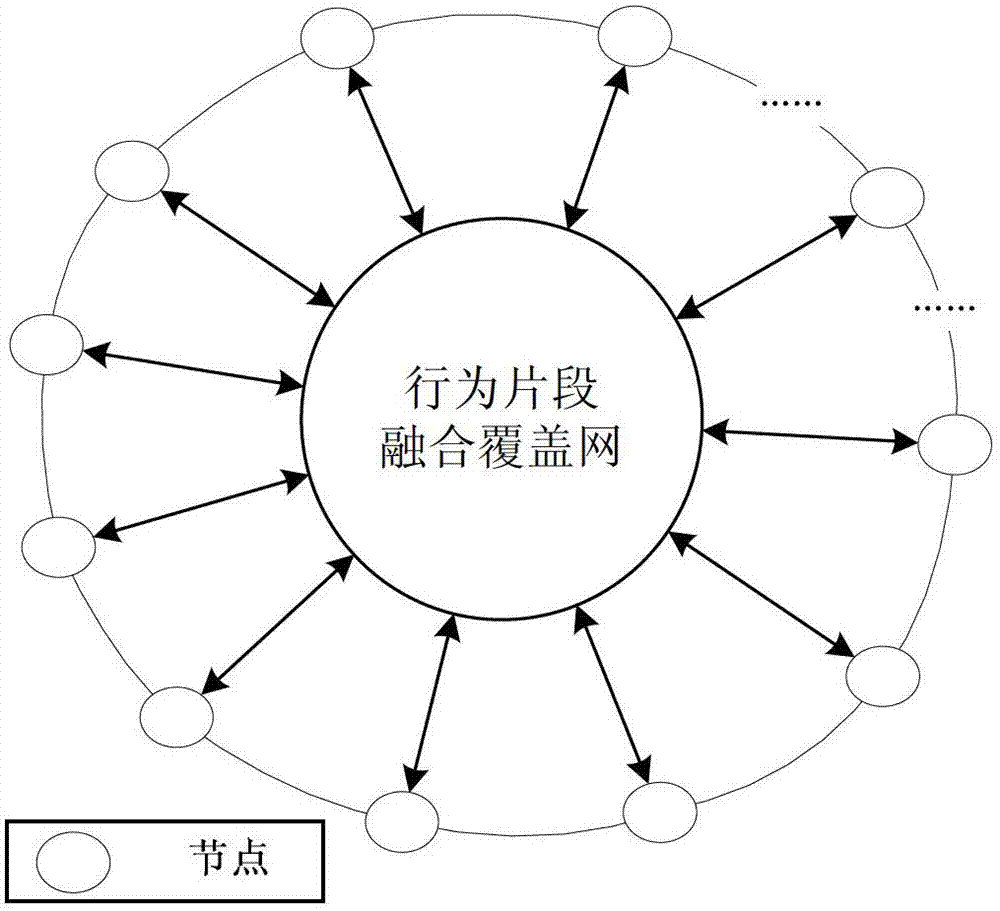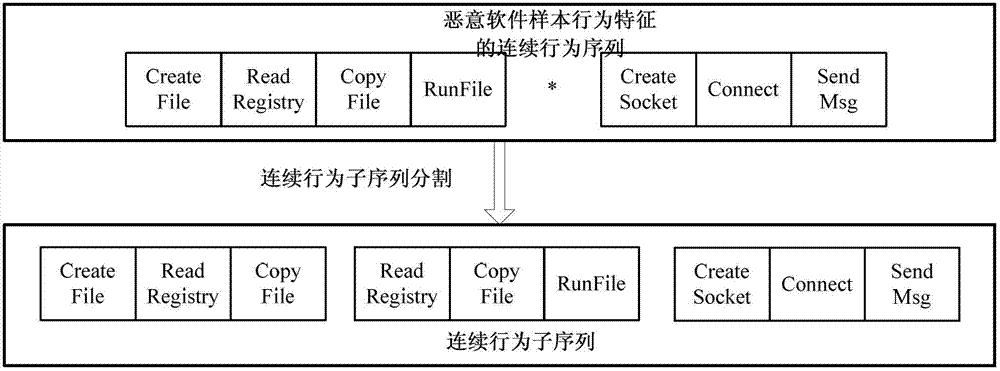Malicious software feature fusion analytical method and system based on shared behavior segments
A malware and feature fusion technology, applied in transmission systems, digital transmission systems, electrical components, etc., can solve problems such as mining signatures, computing and communication bottlenecks, and limited number of samples
- Summary
- Abstract
- Description
- Claims
- Application Information
AI Technical Summary
Problems solved by technology
Method used
Image
Examples
Embodiment Construction
[0085] like figure 1 As shown, the implementation steps of the malware feature fusion analysis method based on behavior fragment sharing in this embodiment are as follows:
[0086] 1) Deploy geographically dispersed nodes in the network, each node is responsible for the collection and analysis of malware samples in a network area, and establish a distributed hash table module for building a distributed hash table in the node;
[0087] 2) Each node collects malware samples and divides them into fixed-length behavior segment sets, and counts the number of local malware samples with behaviors of each behavior segment in the behavior segment set to obtain the local statistical characteristics of the behavior segment set;
[0088] 3) Each node publishes and shares the set of behavior fragments and their local statistical characteristics to the distributed hash table, and gathers the same behavior fragments from different nodes through the nodes of the distributed hash table, and co...
PUM
 Login to View More
Login to View More Abstract
Description
Claims
Application Information
 Login to View More
Login to View More - R&D
- Intellectual Property
- Life Sciences
- Materials
- Tech Scout
- Unparalleled Data Quality
- Higher Quality Content
- 60% Fewer Hallucinations
Browse by: Latest US Patents, China's latest patents, Technical Efficacy Thesaurus, Application Domain, Technology Topic, Popular Technical Reports.
© 2025 PatSnap. All rights reserved.Legal|Privacy policy|Modern Slavery Act Transparency Statement|Sitemap|About US| Contact US: help@patsnap.com



